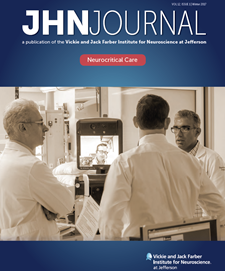Abstract
Fever is frequent in patients with neurologic injury. Differentiating infectious fever from central fever can be challenging. It is important to diagnose the cause of fever in the neurological intensive care unit because of the detrimental effects of fever on brain injured patients. This is a comprehensive review of the role of the two commonly available biomarkers, C-reactive protein and procalcitonin in differentiating the central fever from infectious fever.
INTRODUCTION AND BACKGROUND
Fever is frequently seen in the neurologic intensive care unit (NICU). Incidence rates of up to 70% have been reported in various studies.1-5 Fever can help host defenses by local activation of the coagulation cascade, cytokine-mediated T-cell activation, as well as neutrophil and macrophage recruitment to injured tissues. In brain injured patients, after the initial insult, secondary neuronal injury is speculated to be caused by several processes including mitochondrial dysfunction, inflammatory response, free radical generation, and excitatory neurotransmitter release. Fever has been shown to exacerbate secondary neuronal injury and physiologic dysfunction after traumatic brain injury (TBI), subarachnoid hemorrhage (SAH), and major neurosurgery.6
Recommended Citation
Mukhtar, MD, Umer; Shoukat, MD, Umer; Athar, MD, M. Kamran; and Rincon, MD, Fred
(2017)
"Utility of Biomarkers in the Evaluation of Fever in the Intensive Care Unit After Brain Injury,"
JHN Journal: Vol. 12:
Iss.
1, Article 6.
DOI: https://doi.org/10.29046/JHNJ.012.1.006
Available at:
https://jdc.jefferson.edu/jhnj/vol12/iss1/6

